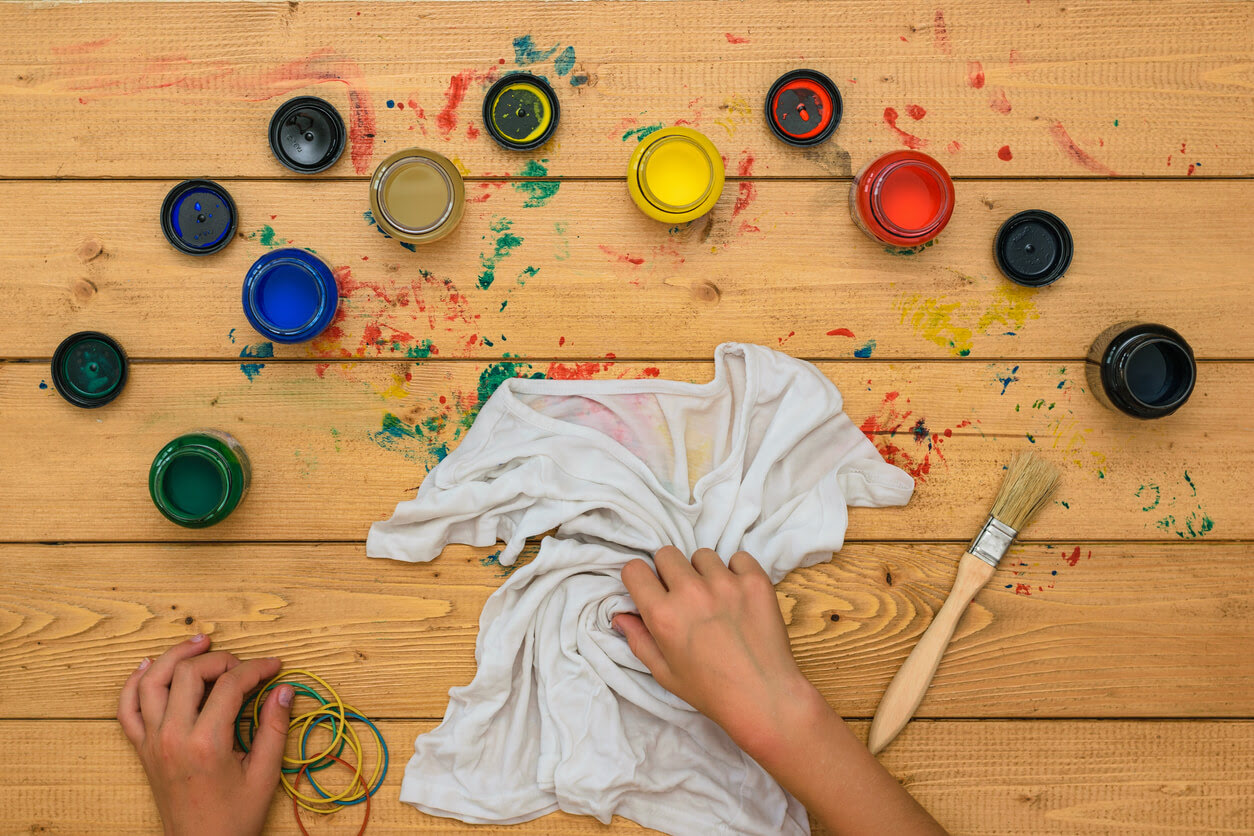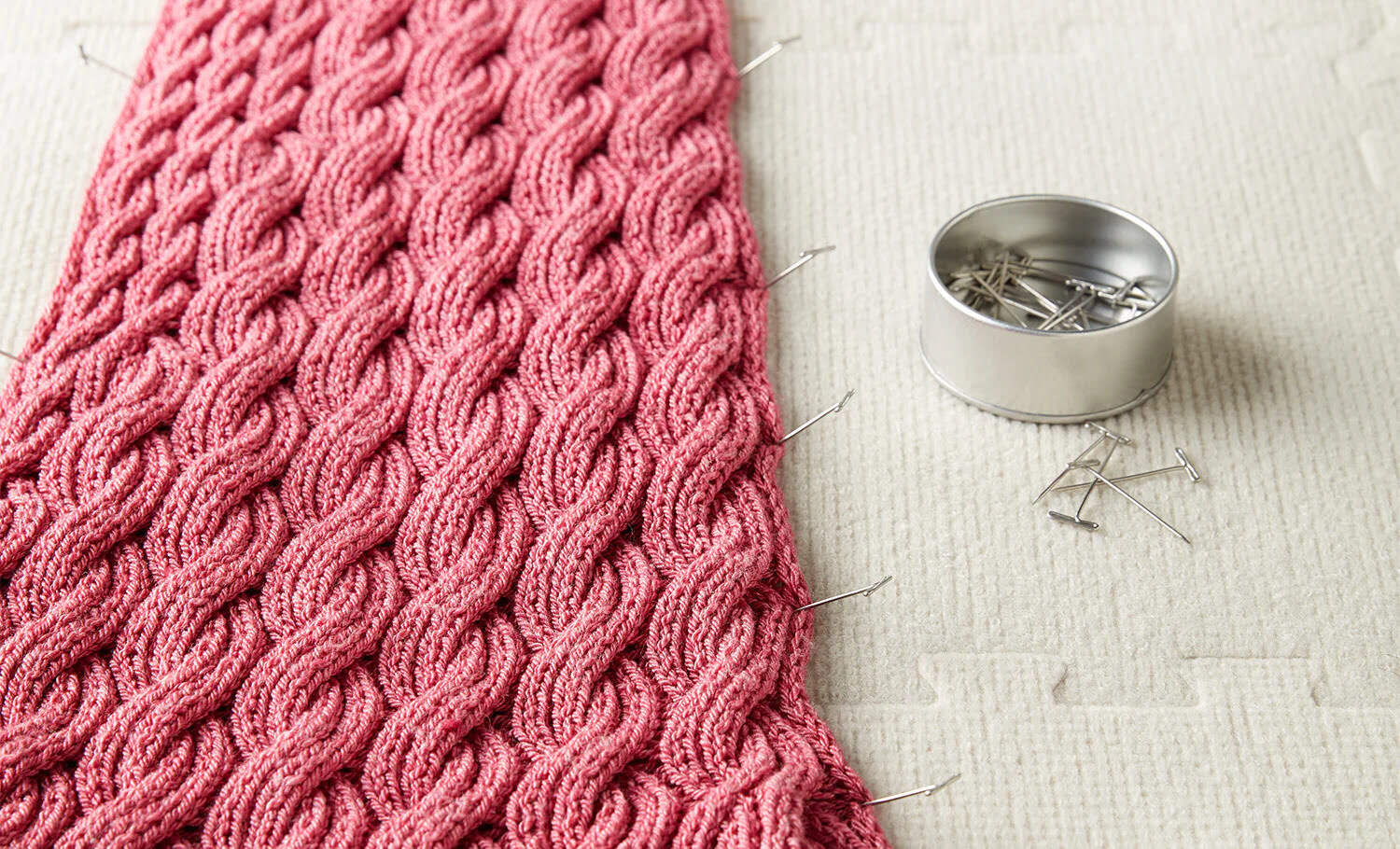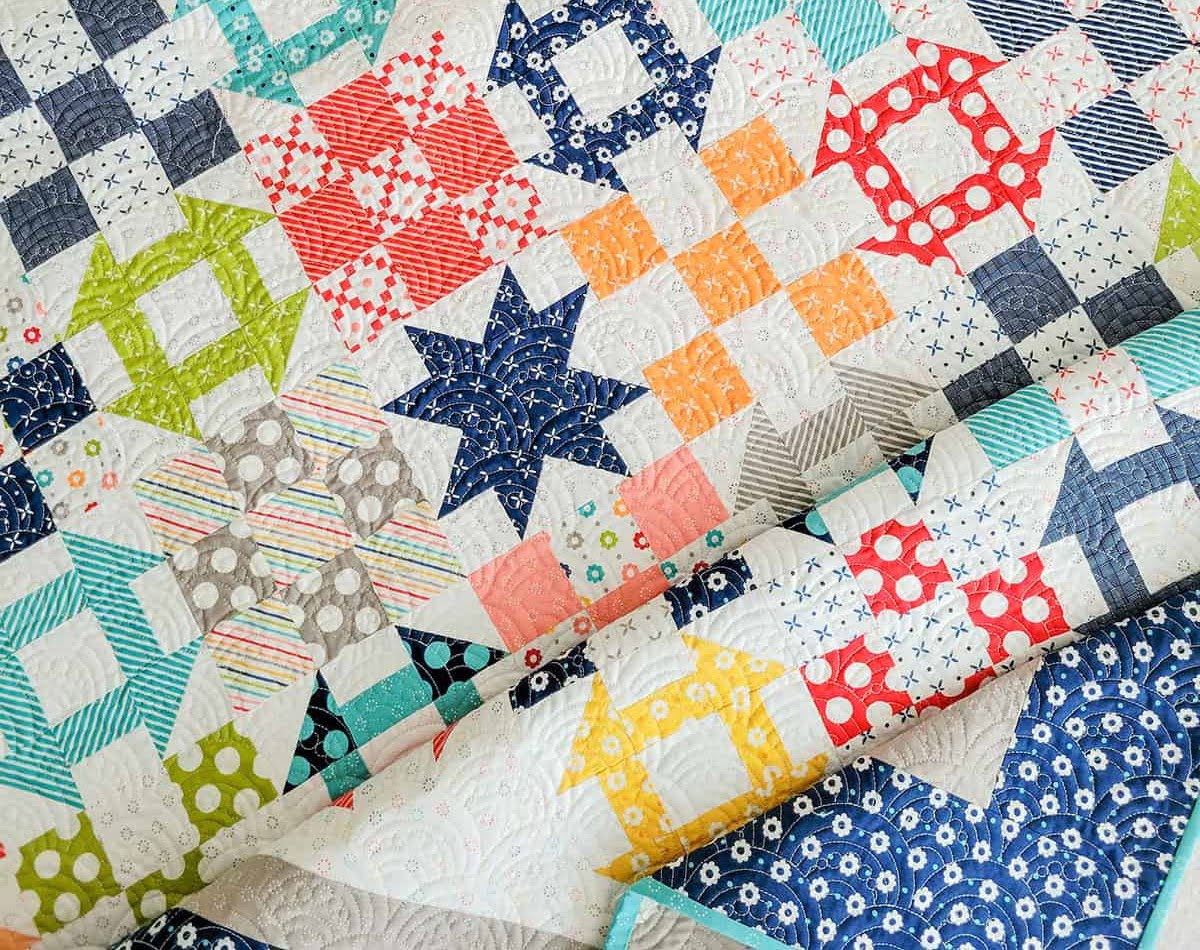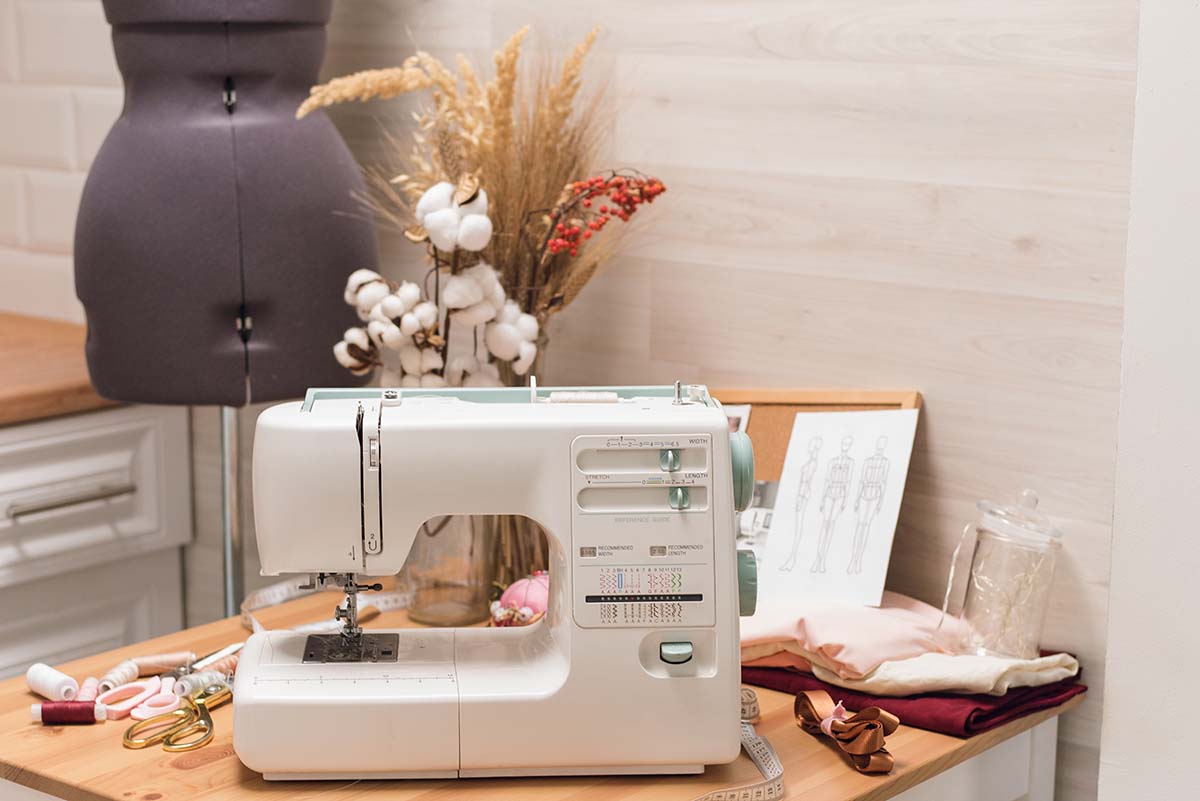Home>Create & Decorate>DIY & Crafts>Mastering Dye Techniques: Tips & Tricks


DIY & Crafts
Mastering Dye Techniques: Tips & Tricks
Published: February 15, 2024

Senior Editor in Create & Decorate, Kathryn combines traditional craftsmanship with contemporary trends. Her background in textile design and commitment to sustainable crafts inspire both content and community.
Discover expert tips and tricks for mastering dye techniques in this comprehensive guide. Elevate your DIY & Crafts projects with these valuable insights.
(Many of the links in this article redirect to a specific reviewed product. Your purchase of these products through affiliate links helps to generate commission for Twigandthistle.com, at no extra cost. Learn more)
Introduction
Dyeing fabric is a captivating and rewarding craft that allows you to transform plain materials into vibrant works of art. Whether you're a seasoned DIY enthusiast or a novice crafter, mastering dye techniques opens up a world of creative possibilities. From achieving rich, uniform colors to experimenting with intricate patterns, the art of dyeing offers endless opportunities for self-expression.
In this comprehensive guide, we will delve into the realm of dyeing techniques, equipping you with the knowledge and skills to elevate your fabric dyeing endeavors. Whether you're looking to breathe new life into old garments, create custom textiles for home decor, or explore the boundless potential of fabric dyeing, this guide will serve as your trusted companion.
Throughout this journey, we will explore the nuances of choosing the right dye for your project, preparing your fabric to ensure optimal results, and mastering both basic and advanced dyeing techniques. Additionally, we will address common issues that may arise during the dyeing process and provide practical troubleshooting tips to help you navigate potential challenges with confidence.
Moreover, we will uncover the secrets to achieving vibrant, long-lasting colors that will stand the test of time. From understanding the impact of fabric types on dye absorption to harnessing the power of color theory, we will equip you with the insights needed to elevate your dyeing projects to new heights.
Furthermore, we will unveil a repertoire of tricks for creating unique and mesmerizing patterns, allowing you to infuse your fabric creations with a touch of individuality and flair. Whether you're drawn to the mesmerizing allure of tie-dye, the precision of shibori, or the artful elegance of ombre gradients, we will guide you through the steps to bring these captivating designs to life.
As we embark on this journey together, prepare to unlock the full potential of fabric dyeing. By the end of this guide, you will possess the knowledge, skills, and inspiration to embark on your dyeing adventures with confidence and creativity. Let's dive into the colorful world of fabric dyeing and unleash your artistic prowess!
Choosing the Right Dye
Selecting the appropriate dye is a pivotal step in achieving the desired results for your fabric dyeing project. With a myriad of dye options available, each offering unique characteristics and application methods, it's essential to consider several factors when making your choice.
Consider the Fabric Type
Different fabrics interact with dyes in distinct ways. Natural fibers, such as cotton, linen, and silk, readily absorb dye, while synthetic fibers, like polyester and nylon, require specialized dyes formulated to bond with their composition. Understanding the fabric type you're working with is crucial in determining the compatibility of the dye and ensuring optimal color penetration and permanence.
Evaluate Colorfastness
When choosing a dye, consider the longevity of the color on the fabric. Some dyes offer exceptional colorfastness, meaning they resist fading and bleeding, resulting in vibrant and enduring hues. This is particularly important for items that will undergo regular washing or exposure to sunlight, such as clothing and home textiles.
Explore Dye Types
From fiber-reactive dyes that form permanent chemical bonds with natural fibers to acid dyes ideal for protein-based fibers like wool and silk, the diverse range of dye types caters to specific fabric compositions. Additionally, direct dyes are suitable for a wide array of fibers, while disperse dyes are tailored for synthetic materials. By understanding the characteristics of each dye type, you can make an informed decision based on your project's requirements.
Environmental Impact
For eco-conscious crafters, eco-friendly and non-toxic dye options are available, offering a sustainable approach to fabric dyeing. These dyes minimize environmental impact and are safe for both crafters and the planet. Considering the environmental implications of the dyes you use aligns with ethical and sustainable crafting practices.
Application Method
Different dyes necessitate specific application techniques, such as immersion dyeing, tie-dyeing, or painting directly onto the fabric. Understanding the application method required by the chosen dye empowers you to plan and execute your dyeing process effectively, ensuring the best possible outcome.
By carefully considering these factors, you can confidently select the right dye for your fabric dyeing project, setting the stage for a successful and visually captivating creation. The chosen dye serves as the cornerstone of your dyeing endeavor, influencing the final appearance and durability of the dyed fabric. With a clear understanding of the fabric type, colorfastness, dye types, environmental impact, and application methods, you are poised to embark on your dyeing journey with informed decision-making and creative enthusiasm.
Preparing Your Fabric
Before immersing your fabric in a vibrant bath of color, it's crucial to prepare it meticulously to ensure optimal dye absorption and long-lasting results. The preparation process lays the foundation for a successful dyeing endeavor, setting the stage for vivid and enduring hues that will adorn your fabric creations. Here's a detailed exploration of the essential steps involved in preparing your fabric for the dyeing process:
Pre-Wash Your Fabric
Commence the preparation by thoroughly pre-washing the fabric using a mild detergent. This step serves to eliminate any residual chemicals, dirt, or sizing agents that may hinder the dye's penetration. Additionally, pre-washing removes excess dye from the fabric, preventing uneven coloration during the dyeing process. Ensure that the fabric is rinsed until the water runs clear, signifying the removal of any impurities.
Consider Fabric Conditioning
For natural fibers prone to stiffness, such as cotton and linen, consider using a fabric conditioner during the pre-wash. This softens the fibers, enhancing their receptiveness to the dye and resulting in a supple and luxurious feel in the finished product. However, exercise caution with fabric softeners, as they may leave a residue that inhibits dye absorption.
Remove Surface Imperfections
Inspect the fabric for any surface imperfections, such as stains, spots, or blemishes, and address them before proceeding with the dyeing process. Stain removal treatments or gentle spot-cleaning methods can be employed to ensure that the fabric surface is pristine and ready to embrace the vibrant hues of the dye.
Ensure Even Moisture Distribution
After pre-washing, ensure that the fabric is uniformly damp before applying the dye. This can be achieved by lightly misting the fabric with water or gently running it through a spin cycle in the washing machine. Even moisture distribution facilitates consistent dye absorption, preventing splotchy or uneven coloration.
Consider Fabric Mordanting
For certain dye types, particularly natural dyes derived from plant sources, mordanting the fabric may be necessary to enhance color retention and vibrancy. Mordants are substances that assist in binding the dye to the fabric fibers, resulting in richer and more enduring colors. Research the specific mordanting requirements based on the dye type and fabric composition to determine if this step is necessary for your project.
By meticulously preparing your fabric through pre-washing, conditioning, imperfection removal, moisture distribution, and potential mordanting, you lay the groundwork for a successful and visually captivating dyeing experience. These preparatory measures ensure that the fabric is primed to embrace the chosen dye, resulting in vibrant, long-lasting colors that will adorn your creations with enduring beauty and allure.
Basic Dyeing Techniques
Basic dyeing techniques form the cornerstone of fabric transformation, offering a spectrum of methods to infuse plain textiles with captivating colors. Whether you're venturing into fabric dyeing for the first time or seeking to refine your skills, mastering these fundamental techniques is essential for bringing your creative visions to life. Let's explore the key basic dyeing techniques that serve as the building blocks of fabric dyeing mastery:
Immersion Dyeing
Immersion dyeing, also known as vat dyeing, involves submerging the fabric entirely in a dye bath to achieve uniform coloration. This technique is ideal for achieving solid, consistent hues across the entire fabric. By immersing the fabric in the dye solution and allowing it to absorb the color fully, you can create garments, linens, and textiles adorned with rich, all-over color saturation.
Tie-Dyeing
Tie-dyeing is a beloved technique characterized by its playful and free-spirited aesthetic. By strategically binding sections of the fabric with rubber bands, strings, or other materials before applying the dye, you can create mesmerizing patterns and bursts of color. The bound areas resist the dye, resulting in captivating swirls, spirals, and kaleidoscopic designs that exude a sense of bohemian charm.
Dip Dyeing
Dip dyeing offers a simple yet impactful method for creating gradient effects and ombre transitions on fabric. By partially immersing the fabric into the dye bath and gradually lifting it out at predetermined intervals, you can achieve stunning color gradients that transition seamlessly from one hue to another. This technique lends itself to creating visually striking garments, home decor accents, and artistic textiles.
Direct Application
Direct application involves applying the dye directly onto the fabric's surface using brushes, sponges, or other applicators. This technique allows for precise control over the placement of color, enabling you to create intricate designs, motifs, and detailed artwork on the fabric. Whether you're embellishing a plain canvas tote or adding personalized touches to garments, direct application empowers you to unleash your creativity with precision and finesse.
Overdyeing
Overdyeing presents an innovative approach to reviving or transforming existing garments and textiles. By dyeing over pre-existing colors, patterns, or faded fabrics, you can breathe new life into old favorites or experiment with layering hues to achieve unique and unexpected color combinations. Overdyeing opens up a realm of creative possibilities, allowing you to reimagine and reinvent your fabric creations with a fresh infusion of color.
Mastering these basic dyeing techniques equips you with the foundational skills needed to embark on a vibrant and expressive fabric dyeing journey. Whether you're drawn to the allure of immersive color baths, the whimsical charm of tie-dye patterns, or the precision of gradient transitions, these techniques serve as your gateway to infusing fabrics with captivating colors and designs. With a solid grasp of these fundamental techniques, you are poised to explore the endless creative potential of fabric dyeing, bringing your artistic visions to fruition with confidence and flair.
Advanced Dyeing Techniques
Beyond the realm of basic dyeing methods lie advanced techniques that elevate fabric dyeing to an art form, offering intricate and mesmerizing approaches to infusing textiles with captivating colors and patterns. These advanced techniques invite crafters to delve deeper into the realm of fabric manipulation and dye application, unlocking a world of creative possibilities. Let's explore the enchanting realm of advanced dyeing techniques that empower crafters to transcend traditional coloration methods and unleash their artistic prowess.
Resist Dyeing
Resist dyeing techniques encompass a diverse array of methods that involve creating barriers to prevent the dye from reaching certain areas of the fabric. This results in captivating patterns and designs that emerge as the resist materials are removed or altered after the dyeing process. From the ancient art of batik, where wax is applied to fabric to create intricate designs, to the Japanese shibori technique, which employs various binding, folding, and clamping methods, resist dyeing offers a captivating fusion of creativity and precision. Crafters can experiment with diverse resist materials and manipulation techniques to produce stunning motifs and visual narratives on fabric, infusing their creations with a sense of artful allure and individuality.
Devoré and Discharge Techniques
Devoré, also known as burnout, and discharge techniques introduce an element of controlled destruction to the fabric dyeing process, resulting in captivating patterns and textures. Devoré involves selectively dissolving certain fibers within the fabric, creating semi-transparent areas that contrast with the intact fibers, producing intricate and ethereal designs. Discharge techniques, on the other hand, entail removing color from specific areas of dyed fabric, unveiling striking negative patterns and tonal variations. These advanced techniques offer a dynamic interplay of light and shadow, adding depth and dimension to fabric creations, and inviting crafters to explore the captivating intersection of chemistry and artistry.
Multi-Layered Dyeing
Multi-layered dyeing techniques invite crafters to embark on a journey of color exploration and composition, allowing for the creation of complex and nuanced fabric designs. By strategically layering different colors of dye, either through successive dye baths or precise application methods, crafters can achieve mesmerizing depth, blending, and interplay of hues on the fabric. This approach enables the creation of rich, multi-dimensional color palettes and captivating visual narratives, infusing fabric creations with a sense of depth and complexity that captivates the eye and ignites the imagination.
Digital and Photo Reactive Printing
In the realm of modern fabric dyeing, digital and photo reactive printing techniques offer innovative avenues for translating digital designs and photographic imagery onto fabric. Through specialized printing processes that utilize digital files or light-sensitive emulsions, crafters can adorn textiles with intricate patterns, detailed illustrations, and photographic reproductions. These advanced printing techniques open up a realm of creative expression, allowing crafters to seamlessly integrate digital artistry and photography into their fabric creations, resulting in visually stunning and intricately detailed textiles that reflect the convergence of traditional craft and contemporary technology.
By delving into these advanced dyeing techniques, crafters can expand their creative horizons, infusing their fabric creations with a sense of artistry, depth, and individuality. From the intricate art of resist dyeing to the captivating interplay of color and texture in devoré and discharge techniques, these advanced methods offer a gateway to boundless creative expression, inviting crafters to explore the enchanting intersection of tradition, innovation, and artistic vision.
Troubleshooting Common Issues
Fabric dyeing, while a rewarding and creative endeavor, may occasionally present challenges that can impact the outcome of your projects. Understanding and effectively addressing common issues encountered during the dyeing process is essential for achieving successful and visually captivating results. Here, we explore key troubleshooting strategies to navigate and overcome prevalent challenges in fabric dyeing:
Uneven Coloration
Uneven color distribution on the fabric can detract from the intended aesthetic impact of your dyeing project. This issue often arises due to inadequate fabric preparation or improper dye application. To address uneven coloration, consider re-washing the fabric to remove any residual substances that may hinder dye absorption. Additionally, ensure thorough and consistent dye application, whether through immersion, tie-dyeing, or direct application methods, to achieve uniform color saturation.
Fading or Washout
The premature fading or washout of dyed fabrics can be attributed to insufficient fixation of the dye molecules to the fabric fibers. To mitigate this issue, consider extending the dye fixation process by allowing the dyed fabric to cure for an extended duration before rinsing. Additionally, utilizing appropriate fixatives or mordants, as recommended for specific dye types, can enhance colorfastness and longevity.
Color Deviation from Expectations
If the final color of the dyed fabric deviates from your initial expectations, it may be attributed to factors such as fabric composition, dye concentration, or application method. To address this issue, consider conducting test swatches on fabric scraps to gauge the anticipated color outcome before proceeding with the main dyeing project. Adjusting dye concentrations, application techniques, or dyeing durations based on the test swatch results can help align the final color with your desired vision.
Staining or Bleeding
Staining or bleeding of dyed fabrics, particularly during subsequent washes, can compromise the integrity of the colors and lead to unwanted color transfer. To mitigate this issue, consider employing color fixatives or post-dyeing treatments to enhance color retention and minimize bleeding. Additionally, thorough rinsing and washing of the dyed fabric after the initial dyeing process can help remove excess dye and reduce the likelihood of staining or bleeding.
Inadequate Color Penetration
Insufficient color penetration, resulting in a faded or patchy appearance, may occur when the dye fails to permeate the fabric evenly. To address this issue, consider prolonging the dye immersion duration or employing agitation techniques to facilitate thorough color penetration. Ensuring that the fabric remains consistently moist during the dyeing process can also contribute to improved color absorption.
By proactively addressing these common issues and implementing targeted troubleshooting strategies, crafters can navigate potential challenges in fabric dyeing with confidence and precision. Through meticulous attention to fabric preparation, dye application, fixation methods, and post-dyeing care, crafters can overcome obstacles and achieve vibrant, enduring, and visually captivating results in their fabric dyeing endeavors.
Tips for Achieving Vibrant Colors
Achieving vibrant and enduring colors is a hallmark of successful fabric dyeing, elevating the visual impact and allure of your creations. By implementing strategic techniques and considerations, crafters can infuse their fabrics with captivating hues that exude vibrancy and longevity. Here are essential tips for achieving vibrant colors in your fabric dyeing endeavors:
1. Fabric Selection
Choose fabrics with a high natural fiber content, such as cotton, linen, or silk, for optimal dye absorption and color vibrancy. Natural fibers readily bond with dyes, resulting in rich and enduring hues that showcase the full spectrum of color intensity.
2. Pre-Wetting
Pre-wet the fabric with water or a dye activator solution before immersing it in the dye bath. This primes the fabric for enhanced dye penetration, ensuring that the colors saturate the fibers uniformly and deeply.
3. Dye Concentration
Adjust the dye concentration based on the desired color intensity. Higher dye concentrations yield more saturated colors, while dilute concentrations result in softer, pastel hues. Experiment with varying dye-to-water ratios to achieve the precise color vibrancy desired for your project.
4. Dye Fixation
Follow the recommended fixation methods for the chosen dye type to ensure optimal colorfastness. Proper fixation secures the dye molecules to the fabric fibers, preventing premature fading and ensuring that the colors remain vibrant and enduring, even after repeated washings.
5. Heat Setting
Utilize heat setting techniques, such as steaming or ironing, to enhance color retention and vibrancy. Heat helps to further bond the dye to the fabric, intensifying the colors and promoting long-lasting saturation.
6. Post-Dyeing Care
Thoroughly rinse and wash the dyed fabric after the dyeing process to remove any excess dye and fixatives. This step minimizes the risk of color bleeding and ensures that the vibrant hues remain crisp and vivid.
7. Color Layering
Experiment with layering different colors of dye to create multi-dimensional and vibrant color palettes. Strategic color layering can yield captivating visual depth and complexity, infusing your fabric creations with a dynamic interplay of hues.
By incorporating these tips into your fabric dyeing practices, you can elevate the vibrancy and visual impact of your creations, resulting in fabrics adorned with enduring and captivating colors that reflect your artistic vision with brilliance and allure.
Tricks for Creating Unique Patterns
Unleashing your creativity in fabric dyeing involves exploring an array of techniques to craft unique and captivating patterns that elevate your creations to new heights. By incorporating innovative methods and strategic approaches, you can infuse your fabrics with mesmerizing designs that reflect your artistic vision. Here are a variety of tricks for creating unique patterns that will inspire and empower your fabric dyeing endeavors:
1. Shibori Mastery
Delve into the art of shibori, a Japanese resist dyeing technique that encompasses a diverse range of binding, folding, and compressing methods to create captivating patterns. Experiment with traditional shibori styles such as arashi (pole wrapping), itajime (clamp resist), and kumo (pleat and bind), or explore modern adaptations to achieve intricate and mesmerizing designs that exude a sense of timeless elegance.
2. Marbling Magic
Embrace the enchanting art of fabric marbling, where floating dyes on a liquid surface are manipulated to produce swirling, marbled patterns on fabric. By carefully orchestrating the movement of the dyes and employing various combing and raking techniques, you can create ethereal and one-of-a-kind designs that evoke a sense of fluidity and organic beauty.
3. Eclectic Batik
Immerse yourself in the ancient craft of batik, where hot wax is applied to fabric to create intricate patterns and motifs. Experiment with diverse wax application methods, from traditional tjanting tools to improvised brushes and stamps, to craft personalized and visually striking designs that showcase the fusion of tradition and individual expression.
4. Nature's Imprints
Harness the beauty of nature by exploring eco-printing techniques, where plant materials such as leaves, flowers, and bark are used to impart their natural pigments onto fabric. Through careful bundling and steaming processes, you can capture the delicate imprints of botanical elements, resulting in organic and ethereal patterns that evoke a deep connection to the natural world.
5. Reverse Dyeing Revelations
Embark on a journey of reverse dyeing, where the removal of color from dyed fabric unveils captivating negative patterns and tonal differentiations. Employ bleach, discharge agents, or selective dye removal methods to create striking contrasts and intricate motifs, adding a dynamic and unexpected dimension to your fabric creations.
6. Freeform Expression
Embrace freeform and intuitive dye application, allowing the colors to blend and merge organically on the fabric surface. By adopting a fluid and spontaneous approach, you can create abstract and expressive patterns that reflect your emotions and creative impulses, resulting in fabric designs imbued with a sense of raw authenticity and artistic freedom.
By integrating these tricks for creating unique patterns into your fabric dyeing repertoire, you can embark on a journey of artistic exploration and self-expression, infusing your creations with captivating designs that reflect your individuality and creative vision. Whether you're drawn to the precision of shibori, the fluidity of marbling, or the expressive freedom of freeform dyeing, these tricks offer a gateway to a world of endless possibilities in fabric pattern creation.
Read more: Innovative Summer Hand Washing Techniques
Conclusion
In the colorful tapestry of fabric dyeing, we have embarked on a vibrant journey, unraveling the intricacies of dye selection, fabric preparation, and an array of dyeing techniques. From the foundational principles of achieving vibrant colors to the artful mastery of creating unique patterns, our exploration has illuminated the boundless potential of fabric dyeing as a medium for artistic expression and creative innovation.
As we conclude this comprehensive guide, it is evident that fabric dyeing transcends mere color application; it is a dynamic fusion of science, artistry, and personal storytelling. The meticulous selection of dyes tailored to fabric types, coupled with thorough fabric preparation, lays the groundwork for successful dye absorption and enduring color vibrancy. Whether immersing fabrics in all-encompassing dye baths, employing intricate resist techniques, or exploring the captivating interplay of color layering, the world of fabric dyeing offers a canvas for boundless creativity.
Moreover, our foray into troubleshooting common issues has equipped us with the knowledge to navigate potential challenges, ensuring that our dyeing endeavors unfold with confidence and precision. By addressing issues such as uneven coloration, fading, and inadequate penetration, we have fortified our ability to achieve consistent and visually captivating results in our fabric dyeing pursuits.
Furthermore, the exploration of advanced dyeing techniques has unveiled a realm of artful sophistication, inviting us to delve into the enchanting world of resist dyeing, devoré, multi-layered color compositions, and innovative printing methods. These advanced techniques beckon us to transcend traditional boundaries, infusing our fabric creations with a sense of depth, complexity, and artistic allure.
As we part ways with this guide, armed with a treasure trove of tips, tricks, and techniques, we stand poised to embark on our fabric dyeing odyssey with renewed vigor and creative fervor. Whether adorning textiles with vibrant, enduring colors or crafting mesmerizing patterns that reflect our individuality, we carry with us the knowledge and inspiration to transform plain fabrics into captivating works of art.
In the colorful world of fabric dyeing, the journey is as enriching as the destination. With each dip, swirl, and stroke of dye, we breathe life into fabrics, infusing them with our creativity, passion, and a kaleidoscope of hues. As we bid adieu to this guide, let us embrace the vibrant possibilities that fabric dyeing offers, knowing that our artistic endeavors will continue to unfold with brilliance, innovation, and the timeless allure of color.
Let the dye pots simmer, the patterns unfurl, and the colors dance as we embark on our individual fabric dyeing adventures, each imbued with the spirit of creativity and the transformative power of color.





